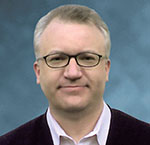Bill Siwicki
Privacy & Security
First National Technology Solutions says software updates, constant patching and employee education are musts.
Privacy & Security
ID management has become central to fighting cybercrime as cloud computing and the internet change the nature of access and security, according to University of Pittsburgh Medical Center’s vice president of security.
Electronic Health Records
The system’s ACO is working with Arcadia Healthcare Solutions on using data to improve health, gain efficiencies and trim costs.
Patient Engagement
The Congressional Budget Office says the two bills will cost less than $1 million combined over the next 5 years.
Healthcare providers, life science companies and technology vendors view artificial intelligence as important to competitiveness, Tata Consultancy Services reports.
Analytics
While healthcare is not applying the same kind of data understanding that other service rely on, precision medicine will bring that to the fore, expert says.
Precision Medicine
CRISPR has sparked considerable excitement for precision medicine, but patient safety, enzyme delivery and today’s level of disease understanding are limiting mainstream adoption.
Privacy & Security
Just demanding two-factor authentication doesn’t go far enough, expert says.
Privacy & Security
Former NSA officer’s advice? Close ports that don’t need to be opened, make sure access points are open only to those who need the access.
Connected Health
Accenture finds 73 percent of healthcare execs say the Internet of Things is poised to upend industry, but only 49 percent think their organization’s leaders understand what it could mean.
